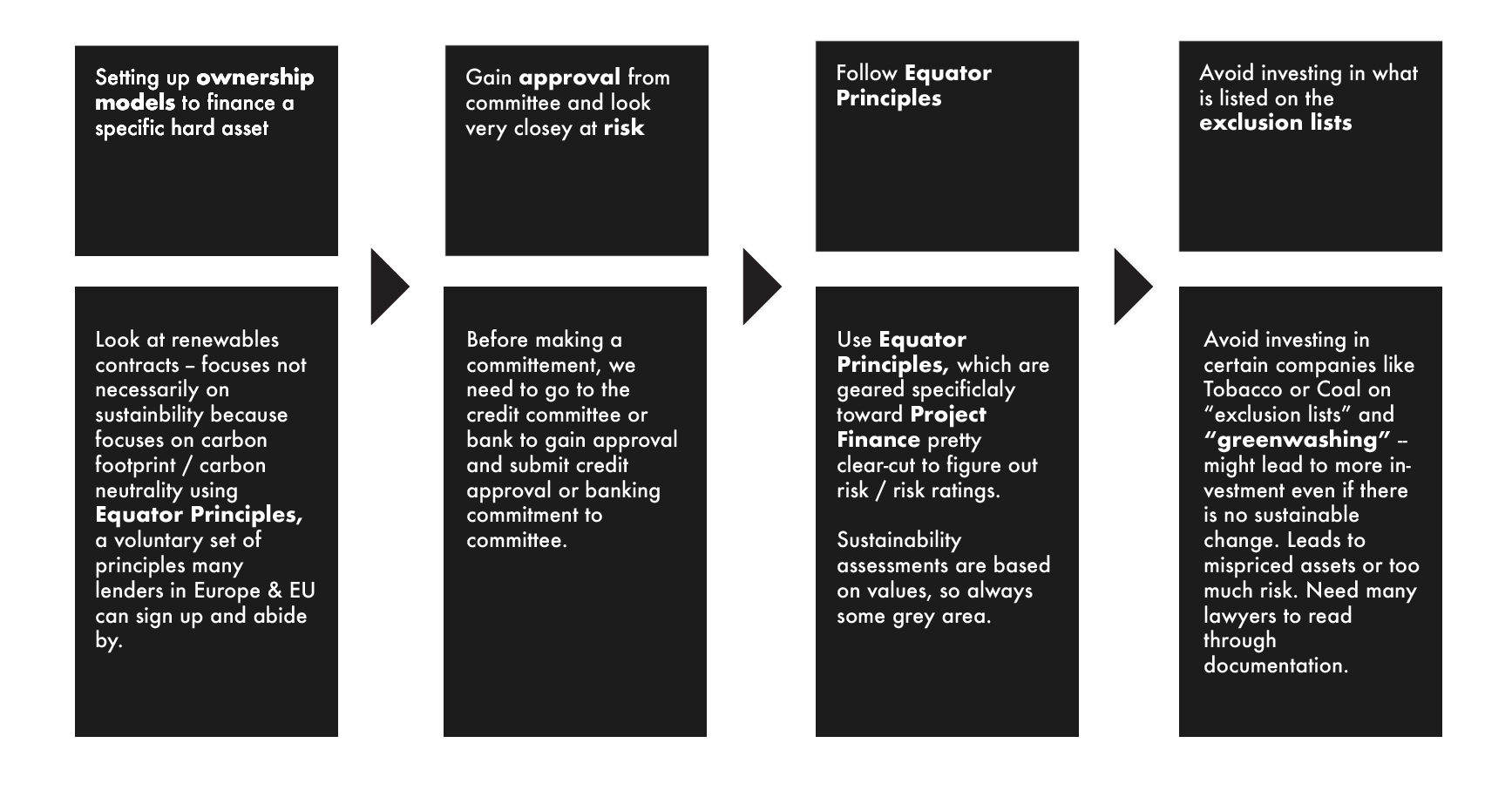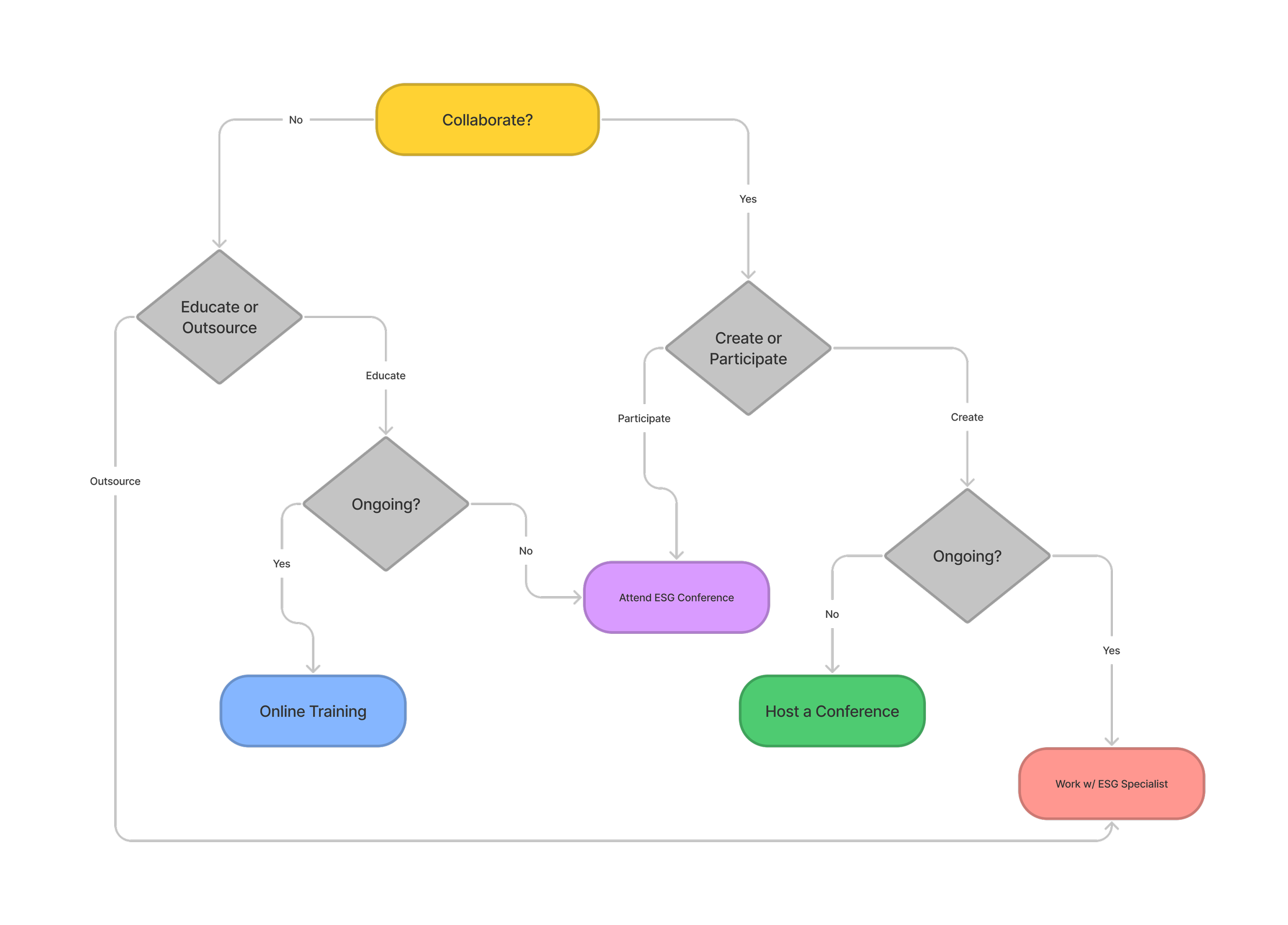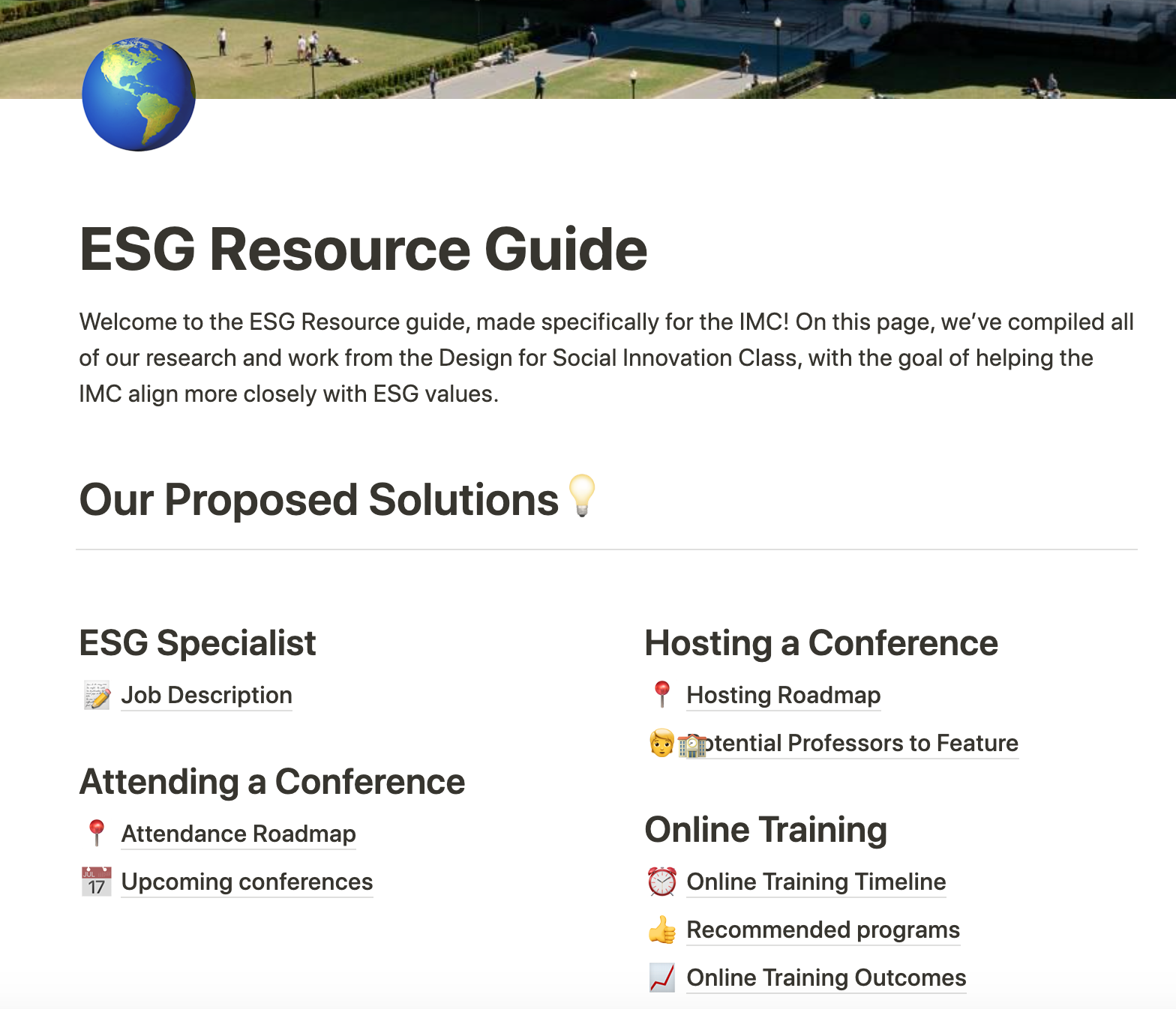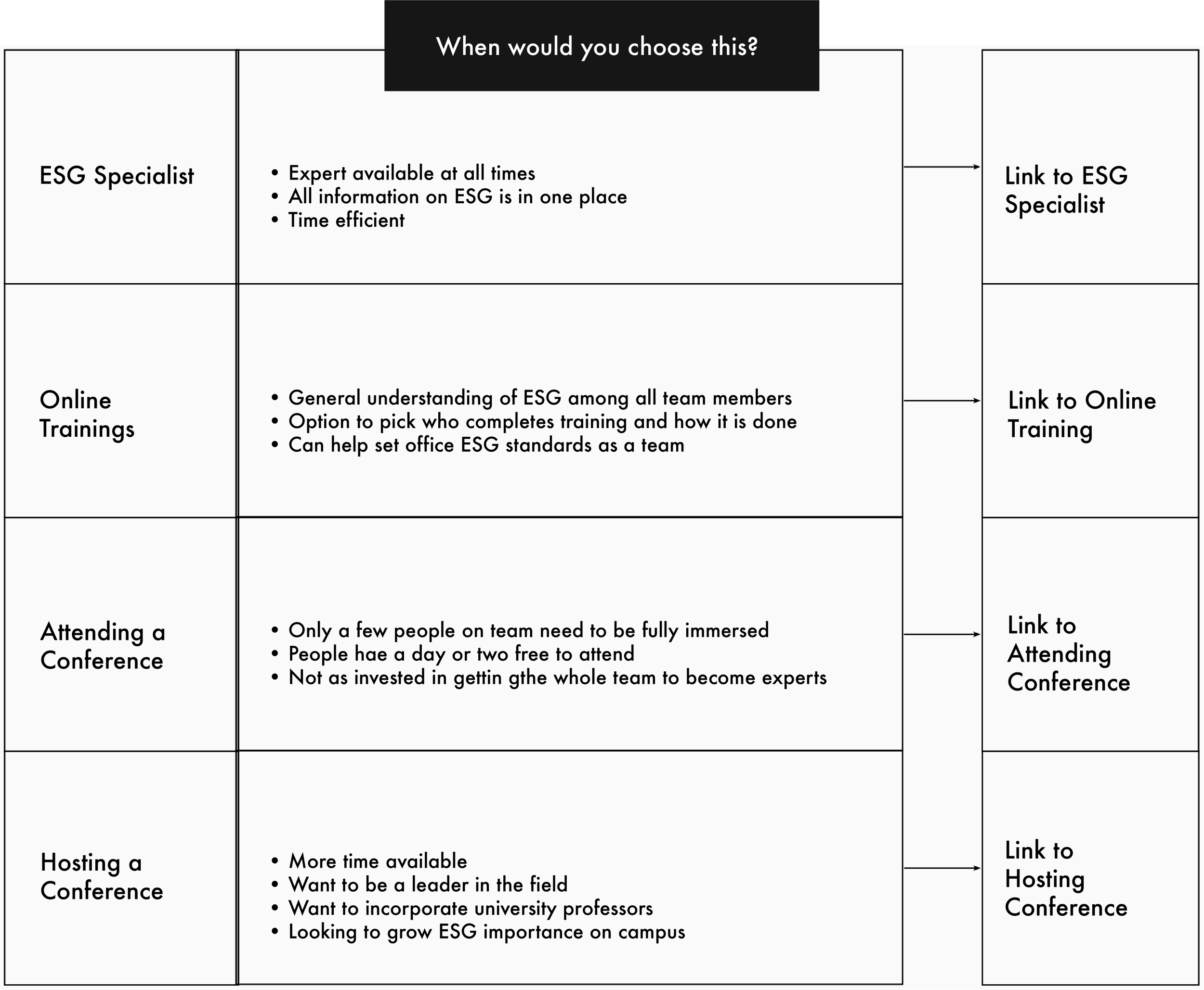IMC
The Columbia Investment Management Company (IMC), is a wholly-owned subsidiary of Columbia University. Under the leadership of Kim Lew, the IMC is charged with managing the bulk of the University's endowments, also known as managed assets.
Overview
In the Spring of 2022, I took a Design for Social Innovation (DFSI) at Columbia University. DFSI is a project-based, semester-long course and collaboration between the Columbia Entrepreneurship Design Studio and the Columbia School of International and Public Affairs (SIPA). In this course, students and faculty at Columbia support social enterprises, nonprofit organizations, and the public sector to address complex, ambiguous global problems through human-centered design. Below is the final project that my team and I created.
Role
As a consultant and extern for the IMC, I conducted stakeholder interviews and research, conceptualized, prototyped, and presented our idea.
Duration
16 weeks (January 2022 to May 2022)
Mentors
Sarah Holloway, Adam Royalty, Erlina Yeo, Ed Yao, Kim Lew
Team
Sajan Bar, Naomi Namboodiripad, Ji-yeon Kwon, Anna Lang
Tools
FigJam, Mural, Canva
Scope
Research, prototyping, presentation design
The Task
Overall, we were tasked to work as “intrapreneurs” (entrepreneurs within organizations) on innovation projects, looking at their clients’ organizational or programmatic challenges through the lens of human-centered design.
Our team specifically got paired with the IMC. The formation of the IMC symbolizes the University's dedication and commitment to the long-term investment management of the endowment with the highest professional standards.
First steps
In order to begin brainstorming ideas for our project, we had to understand some of the goals that our client (IMC) wanted to achieve through working with us for one semester. We had weekly meetings with Erlina and Ed, both managing directors of the IMC, as well as a few meetings with President and Chief Executive Officer Kim Lew, to scope out potential ways we could help.
PRELIMINARY QUESTIONS:
HOW IS THE IMC STRUCTURED? WHAT DOES THE PROCESS OF MAKING INVESTING LOOK LIKE? DOES THE IMC DIRECTLY MANAGE THE ENDOWMENT FUNDS?
Long-term Endowment Growth
Many members on our team did not know anything about the financial services industry or the endowment, so we asked many questions to better understand the IMC’s internal and external systems. As it turns out, we found out that the IMC only invests — the returns go directly to the University to manage and distribute.
To start off
We came up with several ideas based on our first few conversational interactions. However, the last three ideas stood out to Ed and Erlina. They wanted to make sure that the scope was narrow enough to delve into it deep for this semester. They also prioritized these ideas because they found them most purposeful and tangible.
3 IDEAS TO CONNECT THE IMC WITH:
Startups and organizations in areas aligned with the University's mission
Student organizations to facilitate relationships that could be fruitful (i.e., the Columbia Impact Investing Network)
Columbia-affiliated groups (i.e., Columbia Tech Ventures or the Arts Initiatives) to explore DEI initiatives
It became clear to us that the IMC wanted to connect with groups at school, which, in turn, led us to realize how the IMC lacks access to information and resources at school. For example, the IMC cannot directly ask professors for their expertise in their respective fields for investments. Or, there have not yet been ways for the IMC to connect with students to gauge their perceptions around different types of investments. We identified this as a tension to resolve.
Challenges presented by the client
ALIGNING WITH UNIVERSITY VALUES
In the past, the IMC has operated very independently from the university in order to avoid outside influence and conflicts of interest. As a university endowment, the IMC hopes to reflect and enact Columbia’s mission through their investments, especially for investors that might be further removed from Columbia (external investors and wealth managers).
LEVERAGING THE KNOWLEDGE BASE OF THE UNIVERSITY
The IMC hopes to generate better returns by tapping the extensive network, and knowledge of the University’s alumni and faculty while still avoiding conflicts of interest that might arise through closer ties with the university.
INCORPORATING ESG AND DEI STRATEGIES
In order to further align with the University’s mission towards greater ESG and DEI measures, the IMC hopes to better incorporate ESG and DEI strategies within their investments.
Our Approach
INTERVIEWS
GOAL: To better understand the client’s needs and wants by collecting information through various sources/perspectives on investment.
RESEARCH AND BENCHMARKING
GOAL: To gather information on investing principles that are of interest to the client.
Journey Map
We conducted 25+ interviews with investment managers, and Zach Hanson from Rabobank in Sustainable Finance. He walked us through how they follow protocols and make ESG investments.
It was incredibly insightful to hear about the process, as ESG investing metrics have not been standardized.
Important Quotes
-
“We often talk about ESG Metrics, but it is not a formal part of our scoring for managers we invest with… I wish we had some system or methodology for measuring degrees of DEI/ESG. I often feel less informed about what a company actually does when it comes to those fields.”
-
“There is no centralized convention for measuring DEI/ESG, carbon emissions, sustainability, etc… It is typically firm specific… I am always looking for more technology solutions. We are constantly ingesting a ton of data specifically on returns but most of our tech is from the early 2000s.”
-
“I want the IMC to become more analytical. How can we help people quickly retrieve information regarding managers scoring lower scores? From an operational standpoint it is mostly manual updates. On the technology side, I am looking to organize our data more. At times we just need more people to help us run our systems.”
-
“In order to move an endowment forward we need to tell people exactly what to do with practical solutions otherwise nothing actually changes… A portfolio’s number one ESG metric is its carbon footprint. For public portfolios there’s a lot of data that makes it easy to find the carbon footprint. With endowment portfolios, there’s a lot more exposure in private markets so it is very hard to do carbon footprint calculations.”
Preliminary Insights
THEMES WE NOTICED
Divesting vs Investing
Subjective Values (Depending on who you ask)
Investment Regulations (What can you actually invest in?)
Sustainability
Linear Investment Processes
Investing Grey Areas
Tension between connecting with the university & keeping their distance
ESG Investing is not prioritized
DEI is often measured through hiring
NEEDS
Investments that keep them Non-Concessionary
Diversifying their Portfolio
Accountability for Managers
Data on values/ Sustainability
Specialists within ESG
Benchmarks for DEI/ESG within a company
SURVEY LEARNINGS
In gauging what the Columbia community leans towards, we found that they prefer investing in ESG projects centered on climate and sustainability, as well as the arts.
Reframe
IDENTIFYING
We noticed the disconnect and lack of accessibility to professors or student perspectives at Columbia. However, this is problematic because the IMC wants to gain knowledge and expertise without looking so far to remain non-concessionary.
WHY DID WE DECIDE TO TAKE ON THIS CHALLENGE?
After conducting several interviews, we began to see some patterns. Because ESG is an extremely new field, the metrics have not been standardized across the managers – let alone in the industry itself.
Ideation
In ideating, we asked “How might we…?” questions.
For instance, how might we…
Create something sustainable?
Make investing in DEI/ESG beneficial and desirable?
Help the IMC managers understand the nuances or differences between E,S,G,D,E, and I?
Implement strategies day-to-day?
Ensure all members are on board and on the same page of understanding?
Systemize ideas into action?
Our Solution
We a customized toolkit for the IMC, which included a decision tree as shown below.
OUR DESIGN PRINCIPLES
With the creation of this toolkit, we wanted it to …
Allow for a sustainable practice — even after we finish this project
Make it easy to use and highly accessible for all investment managers on board
Involve data
Use resources existing at Columbia
Identify standards to abide by
THE FINAL RESULT
Ultimately, we wanted to create a guide that would live on longer than our course. Although we are no ESG experts, after conducting several interviews and secondary research, it became clear to us that no one quite is in the current era. Thus, we wanted to provide structured, actionable ways for the IMC to become more educated and make more uniform, informed decisions — perhaps even become a leader in this field in the future.
In the package, we included a detailed …
ESG Specialist description, including a thorough list of qualifications and responsibilities
Step guide for the IMC to take when wanting in engage in online ESG trainings and its outcomes
Timeline to attending ESG conferences — with information about real upcoming conferences
Checklist to host a virtual conference — with time and cost considerations and trends to cover and the goal of the IMC becoming a leader in the ESG investment space as well as to other university endowment asset managers
Profile chart of ESG Specialist professors at Columbia Business School, carefully chosen based on their backgrounds and focus areas of research and work
THE PLATFORM
We prioritized accessibility
We used Notion as the platform to create the toolkit for the IMC. All resources were compiled, clearly labeled, and linked to ensure that the IMC team could easily access our proposed solutions and additional resources.
“In what scenario is the best decision?”
Our Final Recommendation
1
ONLINE TRAININGS
Starting point to allow team members to understand ESG before taking any further steps
2
ATTEND CONFERENCE
Allows team members to apply and expand upon knowledge learned in trainings and provides experience on ESG conferences
3
HOST CONFERENCE
Take knowledge from trainings and attending conferences to be a trailblazer in the industry
4
EXTERNAL EXPERTISE
Further focus on ESG by hiring a specialist that can bring more information on ESG and allow for a more in-depth approach to investment in relation to ESG
The Team
On the last day, we got certificates for completing the course! I was immensely proud of the work we had done, and felt grateful that we got to work on this project together.
Reflection
NO LIMITS
We found that mapping out a bunch of ideas with no constraints and then eliminating afterward is the best way to prototype.
EMBRACE THE AMBIGUITY
Even without a clear goal, interviewing more stakeholders is the best way to gain insight on how to help your client. Moreover, we oftentimes felt like we were flying blind, but we realized that this momentum allows you to create more and not get so hung up on the final product.
BE EMPATHETIC AND OPTIMISTIC
We learned to listen to the people around us and our team whilst staying open-minded and letting things play out, which led to a successful outcome and a happy client.
THE INTERSECTION
It was an incredible experience to consult a client and think through business problems with design-thinking processes. I really enjoyed this course, and would love to thank our amazing professors, Sarah and Adam, as well as those over at the IMC — Ed, Erlina, and Kim — for being so incredibly supportive along the journey!







